Handheld Punches and Chisels for Metalworking
Abana Chapter
February 05, 2024
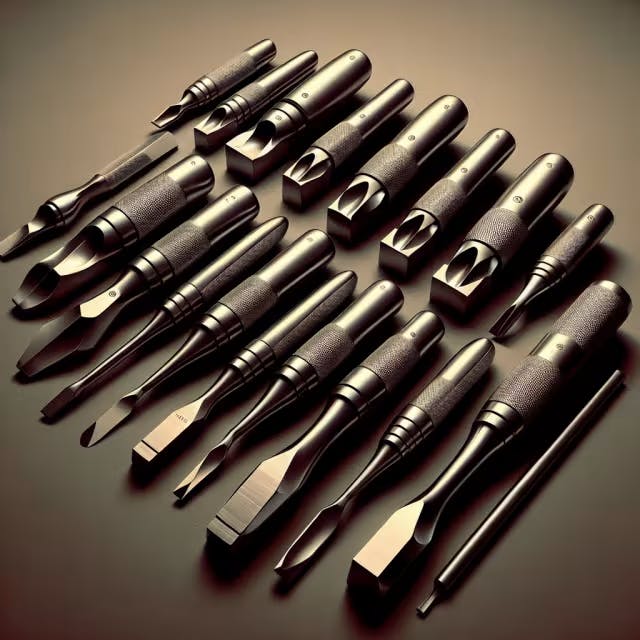
In the intricate world of metalworking, handheld punches and chisels are essential tools that craftsmen cannot afford to overlook. Whether you're a seasoned professional or an enthusiastic DIYer embarking on a new project, understanding the nuances of these instruments is crucial for precision work. This article provides a comprehensive guide to selecting the right metal punch, effectively using chisels for metal shaping, and maintaining these tools for longevity, all while ensuring your safety during the process.
Key Takeaways
Handheld punches and chisels are vital tools for precision metalworking, necessary for both professionals and DIY enthusiasts.
Selecting the right metal punch involves understanding the specific needs of your project and the different types of punches available.
Proper use of chisels is essential for effective metal shaping and achieving the desired results without damaging the tools or materials.
Regular maintenance of punches and chisels, including cleaning, sharpening, and proper storage, is crucial for extending their lifespan.
Safety should always be a top priority when using punches and chisels to prevent injuries; this includes wearing appropriate protective gear and following safe handling procedures.
Understanding the different applications and techniques for using handheld metal punches and chisels can significantly enhance the quality of metalworking tasks.
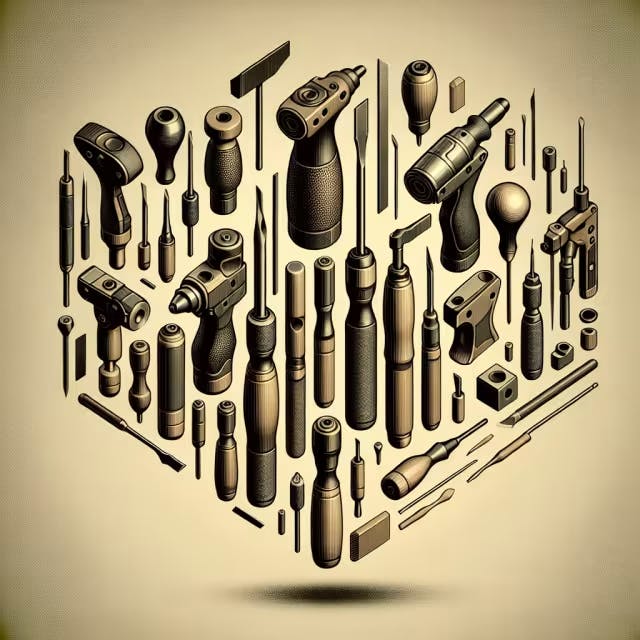
Understanding Handheld Punches and Chisels for Metalworking
Handheld punches and chisels are essential tools for any metalworking project. They come in various shapes and sizes, each designed to perform specific tasks ranging from marking to shaping metal materials. Utilizing these tools requires precision and understanding to achieve the desired outcomes effectively.
Key Differences
Punches: Typically used for marking or creating starting points for drilling.
Chisels: Designed to cut, carve, or chip away at metal.
Selecting the Right Tool When choosing the right punch or chisel for metalworking, consider the metal's hardness and the necessary force. The correct tool will deliver optimal performance without causing premature wear or damage. A common example is using a center punch to indent a piece of metal to guide a drill bit.
For a clear understanding, here's a comparison of commonly used types:
Tool Type | Purpose | Material |
Center Punch | Marking the center for drilling | Hardened steel |
Pin Punch | Dislodging pins or rivets | Steel alloy |
Cold Chisel | Cutting or shaping cold metal | Tempered steel |
Craftsmanship relies heavily on the user's ability to wield these tools skillfully. Regular maintenance, such as sharpening chisel edges and ensuring punch tips are aligned, is crucial for consistent precision work.
Safety should never be overlooked. Protective eyewear is a must due to the possibility of metal shards flying off during work. Moreover, a stable workbench and appropriate hammer will enhance control and reduce the risk of accidents.
To learn more about these fundamental tools, enthusiasts can check various resources and guides. Interacting with seasoned metalworkers and attending workshops will also improve knowledge and expertise in using handheld punches and chisels for metalworking.
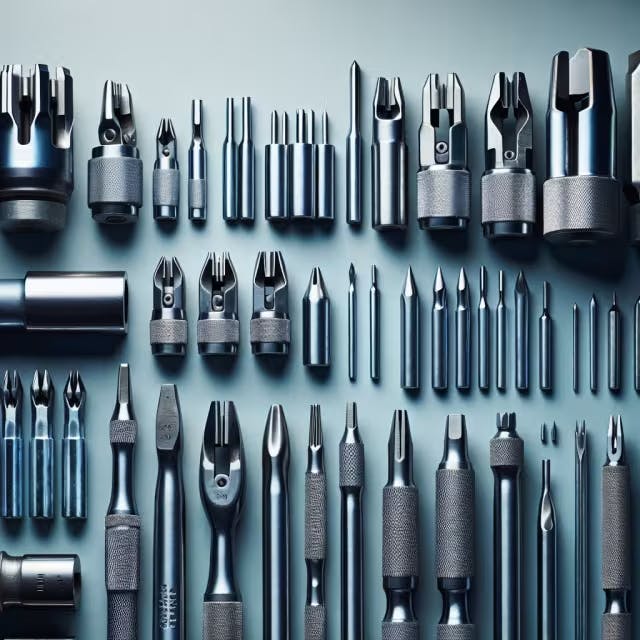
Choosing the Right Metal Punch for Your Project
When selecting a handheld punch for metalworking, you must match the tool to the material and the job at hand. The type of metal punch you need varies based on the application, whether it's for creating precise holes, marking for drill starts, or design work. Material hardness is key, as softer metals like aluminum require a different punch type than harder materials like steel.
Additionally, consider the punch size and shape relative to the task. For example, a center punch is essential for dimpling where a drill bit will start, while a pin punch is better suited for driving out pins or rivets.
Here's a quick guide to choosing the right punch:
Punch Type | Best Use Case | Considerations |
Center Punch | Marking drill start points | Requires precise tip |
Pin Punch | Removing pins or rivets | Various diameter options |
Prick Punch | Extremely fine marks | Ultra-sharp angle |
Drive Punch | Cutting clean holes in thin materials | Needs to be sharp |
Starter Punch | Loosening stubborn pins before using a pin punch | Larger tip to prevent breakage |
The punch's handle design can also impact its use, with some providing a safety grip to prevent slippage and others designed for better force transfer. Ensure that any handheld punch you consider has a sturdy construction, is well-rated by users, and is from a reliable manufacturer. Balancing quality with cost will contribute to investment in a punch that offers durability and precision (Grainger).
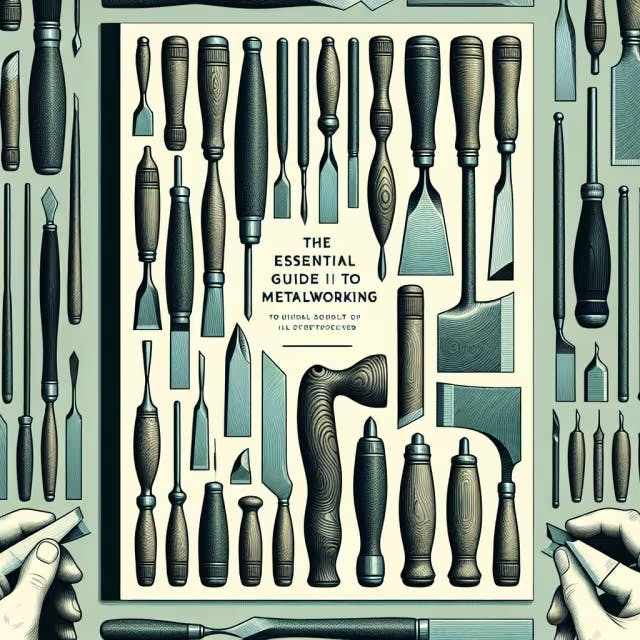
The Essential Guide to Chisels in Metalworking
Chisels and punches are essential tools in metalworking for precision tasks such as cutting, shaping, and removing metal. The correct selection and use of these handheld tools can greatly influence the quality and efficiency of the work.
Common Types of Metalworking Chisels
Cold Chisels: Used for cutting 'cold' metals, meaning they're not heated. These are made of hardened steel to resist the stress.
Hot Chisels: Designed to cut metal that has been heated to make it more malleable.
Cape Chisels: Narrow chisels with a sharp point, ideal for cutting grooves.
Handheld Punches
Center Punches: Vital for marking the center of a point where a drill bit will be applied.
Pin Punches: These are used to remove metal pins or rivets.
Prick Punches: Provide a guide mark for drilling or for more intricate metalwork designs.
Selecting the right chisel or punch involves considering the material hardness, the particular metal being worked on, and the specificity of the task. Handles must be sturdy and provide a good grip to reduce the risk of accidents, and the working tips should be made from high-quality steel to maintain sharpness and shape.
Metalworkers must wear appropriate safety gear, including goggles, to protect against flying shards of metal. Regular maintenance, including grinding and sharpening, ensures tools remain effective and safe to use.
For a comprehensive view of available options and best practices, industry experts offer reviews and recommendations based on the latest innovations in metalworking tools. For example, checking a regularly updated source like Metalworking Tool Reviews can provide insights into the best handheld punches and chisels for specific projects.
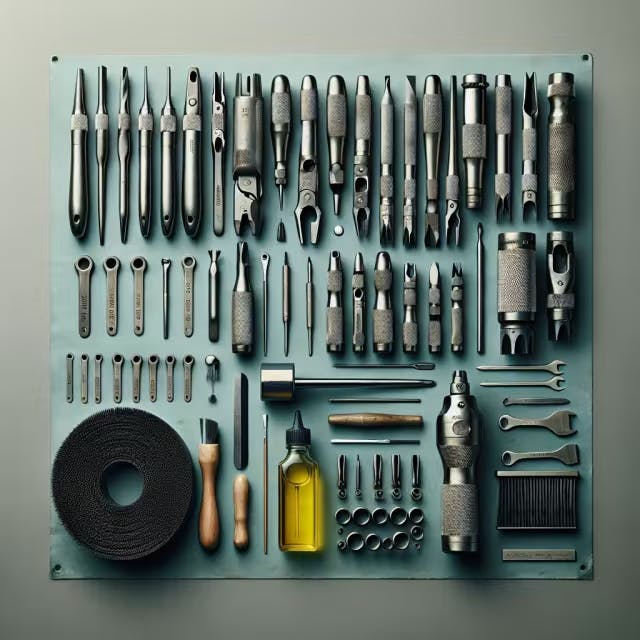
Tips for Maintaining Your Handheld Metal Punches and Chisels
Proper care of your handheld punches and chisels will not only prolong their life but also ensure they deliver precise results when working with metal. Regularly cleaning your tools post-use is a fundamental step. Wipe away any debris or metal filings with a clean cloth to prevent build-up.
Lubrication is another crucial aspect. A few drops of oil on the moving parts can prevent rusting and decrease the likelihood of jamming or stiffness in your punches and chisels. For optimal performance, inspect your tools for signs of wear or damage before each use. If you notice any chips, burrs, or dullness, take the time to sharpen the chisels or consider replacing the affected parts to maintain maximum efficiency.
Storage plays a part in maintenance as well. Use a sturdy toolbox that keeps your punches and chisels organized and protected from the elements. A toolbox with individual compartments or holders is especially beneficial as it prevents tools from knocking against each other, which can cause unnecessary wear or damage.
Here's a quick maintenance checklist for reference:
Activity | Frequency | Description |
Clean | After every use | Remove metal filings and debris |
Inspect | Before each use | Check for wear or damage |
Lubricate | Monthly | Oil moving parts |
Sharpen/Replace | As needed | Sharpen chisels or replace damaged parts |
Store | Always | Keep in a dry, organized toolbox |
Through consistent upkeep and attention to these guidelines, you can substantially extend the lifecycle of your handheld punches and chisels for metalworking.
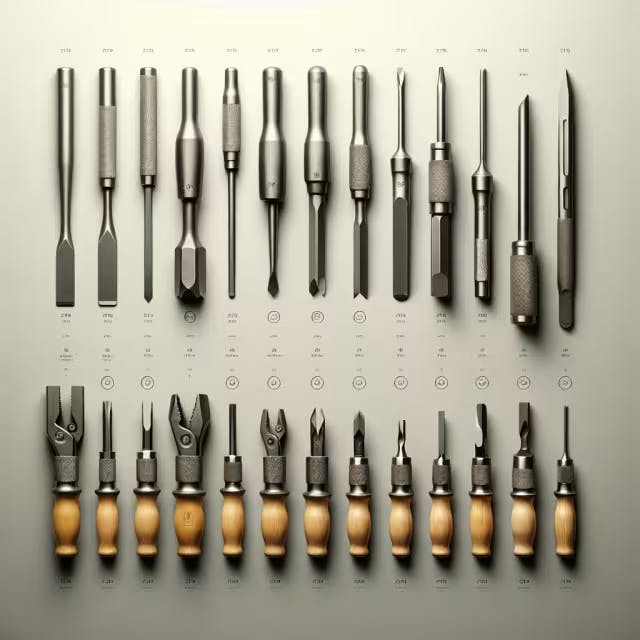
Safety Best Practices for Using Punches and Chisels in Metalworking
When utilizing handheld punches and chisels for metalworking, always wear appropriate safety gear. Protective eyewear is a must to shield your eyes from any flying debris, and strong gloves can help prevent hand injuries. Moreover, ensure that your work is secured firmly in a vise or clamping device to prevent slipping, which could cause an accident.
Consider the following table for a quick reference on safety gear:
Safety Gear | Purpose |
Safety Goggles | Protects eyes from flying metal shards |
Heavy-Duty Gloves | Shields hands from sharp edges and slips |
Ear Protection | Reduces noise from hammering |
Steel-Toed Boots | Guards feet from falling tools or metal |
Additionally, regular maintenance of your tools can prevent them from breaking under stress, which can lead to potential hazards. A punch or chisel that is not sharp or is showing signs of wear should be replaced or sharpened before use, as a dull tool requires more force and can lead to loss of control. When striking a punch or chisel with a hammer, strike squarely to reduce the risk of the tool glancing off and harming yourself or others.
After use, clean and store your punches and chisels in a dry place to avoid rust and degradation, which can compromise their integrity. For more in-depth safety guidelines on metalworking with handheld tools, the Occupational Safety and Health Administration provides comprehensive resources that are invaluable for any metalworker (OSHA - Hand and Power Tools Guidelines).
By following these best practices, you can minimize risk and ensure a safer metalworking environment. In summary, handheld punches and chisels for metalworking are indispensable tools that require careful selection, regular maintenance, and safe usage to ensure they perform effectively. By choosing the appropriate tools for your metal's hardness and project needs, practicing diligent care, and adhering to safety best practices, you can achieve precision metalwork while extending the life of your tools and safeguarding your well-being. Remember, investing time in understanding and maintaining your punches and chisels is just as important as the metalworking process itself.
Frequently Asked Questions
What are the main uses of handheld punches and chisels in metalworking
Handheld punches are primarily used for marking or creating indentations in metal to guide drilling operations, while chisels are used to cut, shape, or remove metal material. Accurate tool selection based on the metal's hardness and the required force is critical to ensure efficiency and longevity of the tools. Regular sharpening and maintenance of these tools are necessary for precision work, and employing safety measures like wearing protective eyewear is essential due to the risks of flying metal shards.
How do the materials of handheld punches affect their application in metalworking
The materials of handheld punches directly influence their suitability for different tasks in metalworking based on the hardness of the material they are intended to work with and the specific nature of the job. When choosing the right punch, considerations such as type, size, shape, and the material of the punch are critical for optimal performance and tool longevity. Here's a guideline for selecting the right type of handheld punch:
Center Punch: Ideal for marking the center for drilling into materials like hardened steel, requiring a precise tip.
Pin Punch: Best for dislodging pins or rivets in material, traditionally made from steel alloy with various diameter options to match the job.
Cold Chisel: Used for cutting or shaping cold (non-heated) metals like tempered steel, designed to handle the associated stresses.
Chisels are indispensable for precision operations like cutting, carving, or chipping metal, whereas punches are more about making indentations or starting points for drills. Regular maintenance, such as sharpening, is necessary to keep these tools in prime condition, and appropriate safety gear, including protective eyewear, should always be used during metalworking tasks. For more detailed recommendations, including reviews of the latest tools, enthusiasts can seek out industry expert advice and online metalworking tool resources.
What are the best practices for selecting the right chisel for a specific metalworking task
Selecting the right chisel or punch for your metalworking task depends on understanding the material hardness, the type of task, and the specific requirements of the job. Use a cold chisel for cutting or shaping unheated metals, and consider a hot chisel for heated materials. Make sure the chisel you choose is made of a material like hardened or tempered steel for durability and longevity.
Here are some best practices for selection:
Ensure the chisel is appropriate for the material's hardness to prevent tool damage and achieve clean cuts.
For accuracy in drilling, use a center punch to mark the start point, and for removing rivets, opt for a pin punch.
Select a cape chisel for detailed grooving work due to its sharp, narrow edge.
Regular maintenance of these tools, including sharpening and proper storage, and adherence to safety measures like wearing protective eyewear and using a stable workbench, are essential for effective and secure metalworking.
How can one maintain and prolong the life of metalworking punches and chisels
To maintain and prolong the life of metalworking punches and chisels, it's important to care for them correctly:
Selecting the Right Tool: Match the punch or chisel to the hardness of the metal and the force required for the task.
Regular Maintenance: Sharpen chisel edges and ensure punch tips are aligned for precision.
Safety Precautions: Wear protective eyewear to guard against metal shards; utilize a stable workbench and appropriate hammer for control.
Lubrication: Apply oil to moving parts to prevent rust and ensure smooth operation.
Storage: Store tools in a dry, organized toolbox to protect them from damage and the elements.
Inspection: Before each use, inspect for any signs of wear or damage and sharpen or replace parts as needed.
By adhering to these practices, you can significantly enhance the lifespan and functionality of your metalworking tools.
Why is safety gear essential when working with handheld punches and chisels
Safety gear is essential when working with handheld punches and chisels because these activities can be hazardous. During metalworking processes, chips and shards of metal can be ejected at high speeds, posing a significant risk to the eyes and face. Therefore, the following safety gear should be used:
Safety glasses or goggles to protect the eyes from metal fragments.
Heavy-duty gloves to shield the hands from sharp edges and enhance grip, reducing the risk of tools slipping.
Hearing protection like earplugs or earmuffs to guard against hearing damage from the noise generated by hammering.
Steel-toed boots to protect the feet from heavy objects or dropped tools.
A stable work surface and secure clamping of materials also contribute to a safer work environment by preventing the metal from moving unpredictably. Regular maintenance of tools, including sharpening and cleaning, and proper storage are all part of ensuring the tools are safe to use and effective for precision work with metal.
What steps should be taken to ensure a safe metalworking environment with handheld tools
Create a safe metalworking environment when using handheld punches and chisels by taking the following steps:
Wear Safety Gear: Use protective eyewear to shield your eyes from metal shards and wear gloves to protect your hands.
Secure Work: Clamp down materials firmly to prevent accidental movement or slipping.
Regular Maintenance: Keep tools sharp and in good condition to reduce the need for excessive force and to maintain control.
Strike Smartly: When using a hammer with punches and chisels, hit squarely to prevent glancing blows that could cause injury.
Clean and Store Properly: After use, clean your tools to remove metal filings and store them in a dry, organized toolbox to prevent rust and tool damage.
Review Safety Resources: Consult resources such as OSHA guidelines to stay informed about best safety practices for metalworking.
Adherence to these steps ensures efficiency in tasks involving handheld punches and chisels and helps in maintaining a safer work environment.


